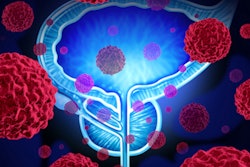Dear CT Insider,
When it's used properly, neck CT angiography is valuable for diagnosing cerebrovascular injury, but its success depends on selecting the most appropriate patients.
That's the key finding of new research presented at the 2016 congress of the European Society of Musculoskeletal Radiology. The investigators looked at 83 patients, many of whom were younger men who had been involved in road traffic accidents or had fallen from heights. The findings are worth a close look, and you can do so here.
An impressive array of dose-reduction techniques is available today, and a multicenter study conducted in Saudi Arabia and the United Arab Emirates (UAE) has shown the benefits of developing and implementing a strategy for minimizing dose. The results were presented at the European Society of Cardiology Congress in Rome. To learn more, click here.
A dedicated meeting about radiological safety takes place today in Dubai, UAE, providing further confirmation that dose awareness is increasing fast in the region. We interviewed session speaker Wadha Al Shamsi, medical physicist and chief medical officer for clinical imaging at Al Ain Hospital in Abu Dhabi. Click here for the full story.
Meanwhile, U.K. researchers studying human cancers have identified two characteristic patterns of DNA damage caused by ionizing radiation, enabling doctors to potentially determine which tumors were caused by radiation exposure. Get the full details here.
A U.S.-German study published in European Radiology has found a new reconstruction algorithm can erase beam-hardening artifacts in myocardial perfusion imaging in dual-source CT, bolstering the reliability of the increasingly popular examination. Click here to read more.
This letter highlights just a few of the many articles posted in the CT Community. For the full list, please check out the lineup below.



















